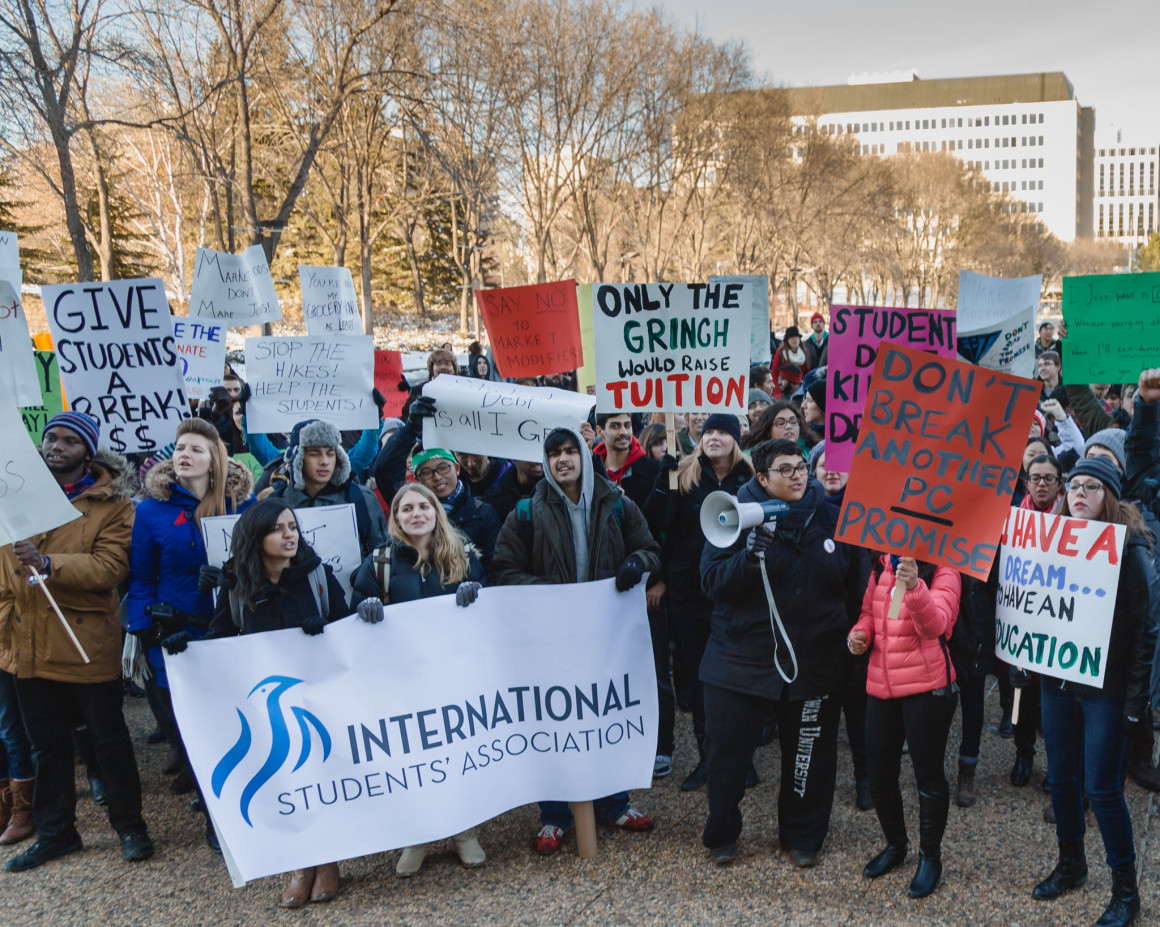
U of C poli-sci professor says voting is not an effective political strategy for Alberta students
By Riley Hill, March 12 2015 —
Conventional wisdom says that politicians would take students seriously if more of them voted. According to University of Calgary political science professor Melanee Thomas, students don’t have the numbers to form an effective voting bloc and the electoral system is not tailored to represent their interests. If students want to influence politics, they should look at other options.
The Gauntlet: Could students at the University of Calgary form a voting bloc that deters the government from cutting post-secondary funding or removing the tuition cap?
Melanee Thomas: Everyone seems to think that students all vote as a bloc. That makes some pretty powerful assumptions about how many students there are and where they live.
What is clear in our system is that we prioritize geographical representation over everything. So if you think about the U of C specifically, students don’t live here. We have a very low residence take-up rate.
If every single student who attended the U of C lived on campus and all voted in the same district, then you could say students are a voting bloc. The U of C is not that. The U of C is a commuter campus which means students, who are a particular community of interest, are spread everywhere.
So the idea that the government’s policy direction would change if more students voted. . .
That’s asking students to determine geographically-bounded elections when they are dispersed across geographies. So the system works against them.
I’m not saying this is an active discrimination. But if you expect this particular demographic to vote in a bloc, the system has to be set up in a different way.
Hypothetically, what would an effective student-voting bloc look like?
Let’s assume maximum student engagement. Say you have 20,000 undergrads and say they all live on campus and 100 per cent of them vote. That might be enough to win one provincial constituency.
But federally, that would not work. The number of electors, people able to vote, is up to 100,000 people in some constituencies. So if you wanted to make this a federal thing and all students were together, they would be 20,000 of 100,000. That’s not enough even for a plurality.
Under a different system, say, where we take geography out of the equation, you can at least hypothetically imagine a students’ party. But in the current system geography trumps everything, and it makes it look as though student issues and concerns aren’t there because they’re not geographically concentrated.
Do students generally vote the same during elections?
Students, like any other community of interest, are ideologically diverse. They have a diversity of opinions. Students will disagree on what the most important issue for them is because identity is complex. Similarly, students have partisan identifications just like everybody does.
In my profession, we see these as socialized lenses or perceptual screens that colour how students see more immediate information. This colours how you view changes to student issues, and everyone will see things a little differently which means you will see a diversity of views.
The kind of diversity you see in the whole population is mirrored in students. This is why it’s a pretty strong assumption to say students would be in lock step on any issue.
Isn’t it still students’ fault that they’re not more engaged in politics?
We know that the younger people are, the less likely they are to participate in politics.
There are two things that contribute to this. The first is called life-cycle effects. There is something about being young which means you’re doing other things. It’s usually not until people have experiences like having children, or having career-stable employment as opposed to part-time work, that they become more engaged.
The way I like to think about it is that as you get older, your contacts with the state increase, especially the welfare state. It might be the first time you pay property tax, or when your kids get sick and you have to access a family doctor.
The other thing that’s working against this particular generation is that when we compare participation levels by generation, for every younger generation the starting point is lower. What does this mean? Say 50 per cent of a generation start voting at age 18, then as they get older 70 per cent eventually participate. With the next generation, only 40 per cent will start voting at 18, and 65 per cent might vote when they’re 50. The same thing happens with the next generation.
What’s important to understand is that the youngest don’t participate in part because of how old they are and what that means in terms of their lives.
What other political strategies have worked for students?
In Quebec, they have some of the lowest fees in the country. But they protest in the street loudly every time the government wants to change the tuition-fee policy because it works every time.
Here in Alberta, in 2013, everyone said, “Why are they complaining? Don’t they realize that it’s so much worse elsewhere.” The counter argument is if you know it works, why wouldn’t you protest every single time if you opposed a policy direction?
But the student protests were widely condemned by older generations. Isn’t this counter productive?
People like to tell students that they should just vote their interest. They make assumptions that the system is set up to facilitate that.
The system is not set up to facilitate that. So people make errors about the system then blame students when the system works as designed.
Then when some students get frustrated — students in Montreal are a great example of this — they take to the streets then are told, “What’s wrong with you. You shouldn’t be doing this.”
Edited for clarity and brevity.
